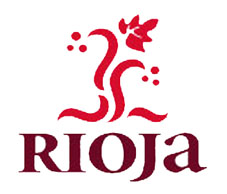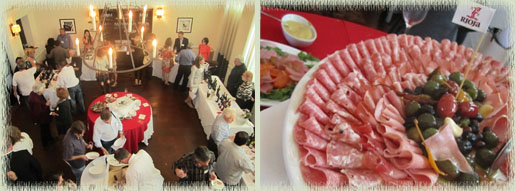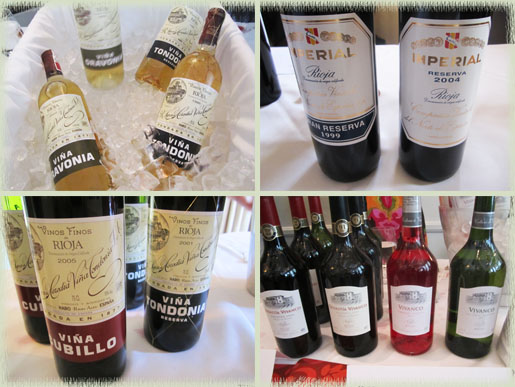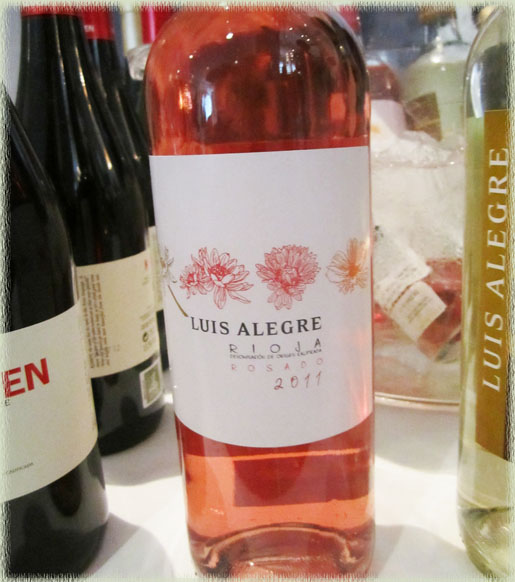

|
28 May
2012 |
 Earlier this month, Leah and I attended the Vibrant Rioja trade tasting at Campanile restaurant. Rioja is Spain’s leading wine region, straddling the river (río) Ebro in the north and extending up into Basque country. The region is named after the río Oja, a tributary of the Ebro, and is divided into three zones along the Egro—Rioja Alta (west of Logroño, including the winemaking town Haro, not far from Pamplona, in case you are into jogging in front of a bull), Rioja Alavesa (north of the Ebro into Basque country) and Rioja Baja (south and east of Logroño).
Earlier this month, Leah and I attended the Vibrant Rioja trade tasting at Campanile restaurant. Rioja is Spain’s leading wine region, straddling the river (río) Ebro in the north and extending up into Basque country. The region is named after the río Oja, a tributary of the Ebro, and is divided into three zones along the Egro—Rioja Alta (west of Logroño, including the winemaking town Haro, not far from Pamplona, in case you are into jogging in front of a bull), Rioja Alavesa (north of the Ebro into Basque country) and Rioja Baja (south and east of Logroño).
Winemaking in Rioja dates back to Roman times, but expanded after the Christians recaptured the area from the Moors in the 15th century. In the 1700s, when communications improved and trading took hold, Rioja wines became known outside the area. Rioja became Spain’s first DO (or Denominación de Origen controlled appellation in 1926 and was elevated in 1991 to the newly–created DOCa (or Denominación de Origen Calificada) status (which imposes some additional quality standards, but principally means that the grapes are priced at least 200% above the national average). Additional terms (Crianza, Reserva and Gran Reserva) are used to convey the amount of time the wine remains in 225 liter oak barrica (typically, American oak) and the minimum ageing period (or Cosecha for wines that do not meet those standards).

Rioja is protected by mountains from the extremes of the Atlantic Ocean and enjoys relatively consistent climate conditions compared to other Spanish wine regions, although there are significant weather and altitude variations across Rioja. The principal red wine grapes of Rioja are Tempranillo, followed by Garnacha (which adds body) and, to a lesser extent, Mazuelo (or Carignan) and Graciano (known for adding structure and aroma, often blended with the lighter Tempranillo). For white wines, Rioja offers Viura (synonymous with Macebeo), Malvasía, Verdejo, Sauvignon Blanc and Chardonnay.

The wines of Rioja are food wines, meant to be enjoyed with a meal. Pork tenderloin or roast, salumi and dry cheeses love Rioja wines, and Campanile had just that to pair with the wines. Of the wines we sampled that day, we did have some clear favorites (though we note that we didn’t taste all of the wines on hand). For white wines, we really enjoyed the Lopez de Heredia 2002 Viña Gravonia Crianza, the Lopez de Heredia 1996 Viña Tondonia Blanco Reserva, and the Dinastía Vivanco Blanco 2011. For reds, our favorites were the Cune Imperial Reserva 2004, the Cune Imperial Gran Reserva 1999, the Cune Monopole 2010, the Viña Real Crianza 2008, the Lopez de Heredia 2005 Viña Cubillo Crianza, the Lopez de Heredia 2001 Viña Tondonia Reserva, the Dinastía Vivanco Crianza 2008 and the Dinastía Vivanco Reserva 2005. We also enjoyed the Palacios Remondo La Vendimia 2010 from Rioja Baja.
While we weren’t expecting to find a fantastic rosé among the Rioja wines, we both loved the Luis Alegre Rosado Rioja 2011 presented by Andreas Kraemer of Vinos Libres Wine Merchants. This wine is coming to the west coast very soon (likely priced around $15, a good value), though we hear it is very popular in New York right now. A 60/40 blend of Tempranillo and Viura, this rosado is the perfect summer backyard or beach wine. The winemaker’s description is spot on—bright, salmon pink color with orange tinges, with a nose of tropical fresh fruit salad and subtle aromatic wild flowers. The wine is balanced with nice acidity and it remains on the palate with fresh fruit flavors. Contact us or Andreas if you want an update on when this wine will arrive on the west coast.

I wrote about the La Rioja Alta 2003 Viña Alberdi Reserva Rioja in my Time for Tempranillo post last year because I loved the wine with barbecued pork tenderloin. At the tasting, they poured the 2005 (but I don’t believe it was the Reserva—if it was, something was wrong with the particular bottle). I mention this because I was a bit disappointed with the taste. To make the comparison fair, however, I picked up a fresh bottle of the 2005 Viña Alberdi Reserva Rioja (100% Tempranillo) to compare to the 2003 (I paid $19.99) and, to my relief, it was very good (as I had remembered the 2003). I recommend this wine to you as a great value—just be sure you get the Reserva!
Rioja has a large number of grape growers who have no winemaking facilities. The number of bodegas (or wineries) has been expanding in recent years and we can expect some vertical integration to occur in the coming years, giving wine producers even more control over all aspects of viticulture and viniculture. Even though Rioja wines are well–established leaders, this certainly bodes well for the future.
Disclosure: We were granted complimentary media credentials for this wine tasting event.
Click here to print.
Copyright © 2008-2024 Wine Imbiber All rights reserved. Wine Imbiber® is a registered trademark of Wine Imbiber.
URL to article: http://www.wineimbiber.com/index.php/2012/05/vibrant-rioja/